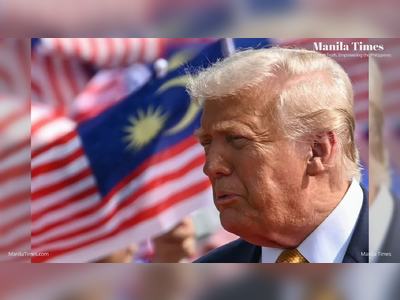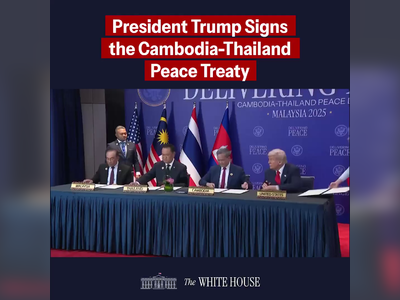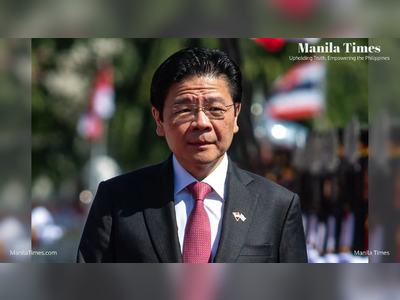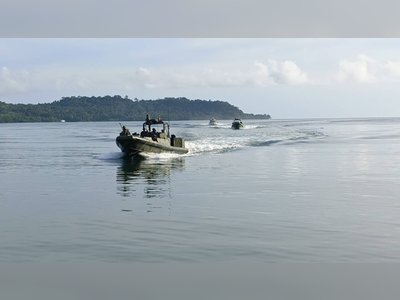Manila Times
Upholding Truth. Empowering the Philippines
Saturday, Nov 01, 2025
The Nation's Story is Told with Honor
US and China Agree One-Year Trade Truce After Trump-Xi Talks
Leaders commit to pause key trade hostilities and delay export-controls as a fresh diplomatic reset begins
United States President Donald Trump and Chinese President Xi Jinping formalised a one-year trade truce following their meeting on the sidelines of the Asia-Pacific Economic Cooperation summit in Busan, South Korea.
The accord delays several planned trade escalations, including Beijing’s export restrictions on rare earth minerals and Washington’s threatened increase in tariffs on Chinese goods.
Under the agreement, China will hold off on implementing new export controls for up to twelve months, while the U.S. will suspend immediate additional punitive tariffs—representing a strategic de-escalation in the world’s largest bilateral economic rivalry.
According to U.S. officials, the deal also includes commitments from China to boost imports of American agricultural goods, particularly soybeans, and to enhance cooperation on controlling the flow of fentanyl precursors.
President Trump praised the arrangement as a “deal done”, calling the summit a “twelve out of ten” success, and asserted that markets had reacted positively to the renewed stability in global trade relations.
Chinese state media offered guarded confirmation, saying the two nations had reached a “basic consensus” and pledged to maintain channels for economic coordination.
Despite the breakthrough, analysts caution that the agreement represents a tactical pause rather than a comprehensive settlement: core disputes such as semiconductor export controls, Taiwanese supply-chain access, and Chinese industrial subsidies remain unresolved.
Officials emphasised that a detailed framework is still under negotiation, and both sides will hold senior-level follow-up talks in the coming weeks.
From Washington’s perspective, the truce validates Trump’s approach of pressing for reciprocal trade terms while offering flexibility in pursuit of de-risking supply-chain dependencies and restoring U.S. industrial leadership.
Beijing, meanwhile, views the hiatus as an opportunity to stabilise foreign investment flows and preserve access to critical export markets.
With tensions temporarily subdued, attention now turns to implementation: companies and investors will assess whether the pause heralds a durable shift or simply a breathing space before further confrontation.
The accord delays several planned trade escalations, including Beijing’s export restrictions on rare earth minerals and Washington’s threatened increase in tariffs on Chinese goods.
Under the agreement, China will hold off on implementing new export controls for up to twelve months, while the U.S. will suspend immediate additional punitive tariffs—representing a strategic de-escalation in the world’s largest bilateral economic rivalry.
According to U.S. officials, the deal also includes commitments from China to boost imports of American agricultural goods, particularly soybeans, and to enhance cooperation on controlling the flow of fentanyl precursors.
President Trump praised the arrangement as a “deal done”, calling the summit a “twelve out of ten” success, and asserted that markets had reacted positively to the renewed stability in global trade relations.
Chinese state media offered guarded confirmation, saying the two nations had reached a “basic consensus” and pledged to maintain channels for economic coordination.
Despite the breakthrough, analysts caution that the agreement represents a tactical pause rather than a comprehensive settlement: core disputes such as semiconductor export controls, Taiwanese supply-chain access, and Chinese industrial subsidies remain unresolved.
Officials emphasised that a detailed framework is still under negotiation, and both sides will hold senior-level follow-up talks in the coming weeks.
From Washington’s perspective, the truce validates Trump’s approach of pressing for reciprocal trade terms while offering flexibility in pursuit of de-risking supply-chain dependencies and restoring U.S. industrial leadership.
Beijing, meanwhile, views the hiatus as an opportunity to stabilise foreign investment flows and preserve access to critical export markets.
With tensions temporarily subdued, attention now turns to implementation: companies and investors will assess whether the pause heralds a durable shift or simply a breathing space before further confrontation.
AI Disclaimer: An advanced artificial intelligence (AI) system generated the content of this page on its own. This innovative technology conducts extensive research from a variety of reliable sources, performs rigorous fact-checking and verification, cleans up and balances biased or manipulated content, and presents a minimal factual summary that is just enough yet essential for you to function as an informed and educated citizen. Please keep in mind, however, that this system is an evolving technology, and as a result, the article may contain accidental inaccuracies or errors. We urge you to help us improve our site by reporting any inaccuracies you find using the "Contact Us" link at the bottom of this page. Your helpful feedback helps us improve our system and deliver more precise content. When you find an article of interest here, please look for the full and extensive coverage of this topic in traditional news sources, as they are written by professional journalists that we try to support, not replace. We appreciate your understanding and assistance.










